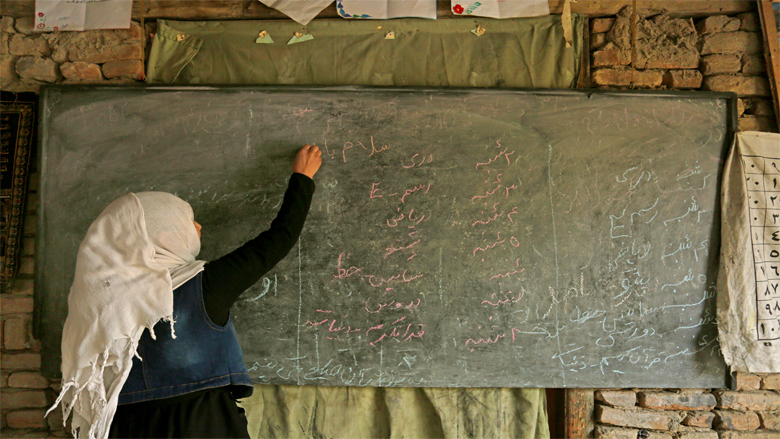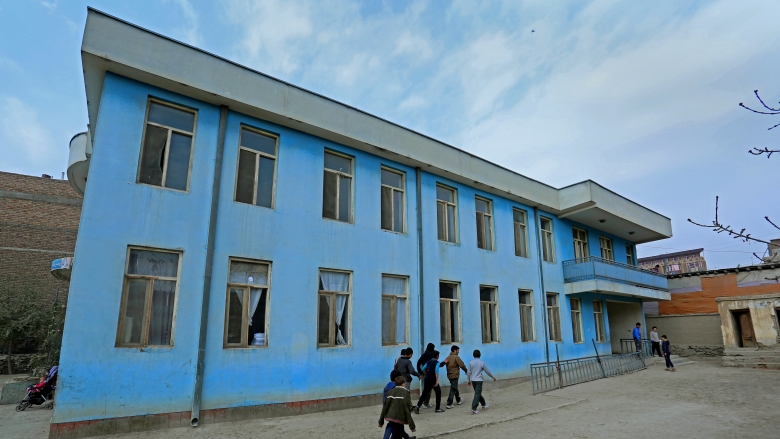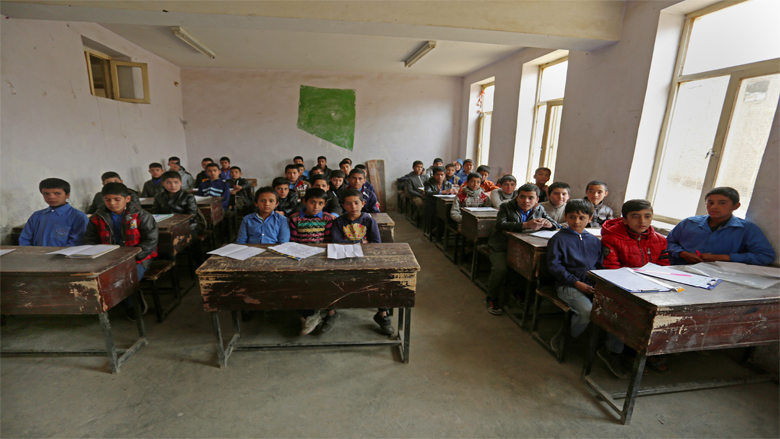KABUL CITY – The school bell chimes and students make their way to the classrooms. They are dressed in winter uniforms, bundled up in blazers and woolens. In the classrooms, teachers hurry students to their seats and begin distributing exam papers. Today is the last day of examinations in the school and the students are excited about the winter holidays that start the next day.
It was not always the case that students sat in a proper classroom, insulated from inclement weather, for lessons and exams at the Mirman Secondary School. “It was only a few years ago that this building was constructed. It is well planned and a strong, stable structure,” says Jamila, the school principal, of the school building. “Before it was constructed, all we had were ruins. We had no doors, no windows, and in some classrooms, no wall.”
Established in 1960, Mirman School stands tall in the heart of the twisted and crowded lanes of Shur Bazar in old Kabul city. In the past, classes were held under tents and among the ruins of old buildings. “It was not at all like a classroom,” says Jamila. “Now students attend classes in standardized classrooms and are more focused.”
The school has the Education Quality Improvement Program (EQUIP) to thank for the school building and other facilities. Now in its second phase, EQUIP II seeks to increase equitable access to quality basic education, especially for girls. It is implemented by the Ministry of Education and funded by the Afghanistan Reconstruction Trust Fund (ARTF). EQUIP was originally supported by the International Development Association (IDA), the World Bank Group’s fund for the poorest countries.
Construction of the school building started in 2007 and was completed in 2009. The eight new classrooms were constructed at a total cost of $98,461, financed by EQUIP’s Infrastructure Development Grant (IDG). A proper building has led to a significant increase in the enrollment, paved the way for better quality education, and strengthened the school’s connection with the community, says Jamila. The school has seen an increase in enrollment—80 children registered for admission in 2016, a jump of more than 30 percent over previous years’ average of 50-60 new enrollments.
Shima, 45, a teacher at the school, agrees that the school building has had significant impact on enrollment. “When we did not have a school building, things were very different. Even though I was a teacher in the school, I did not want to send my child here,” she says. “Once the school building was constructed, a lot of people were eager to send their children to this school.”



